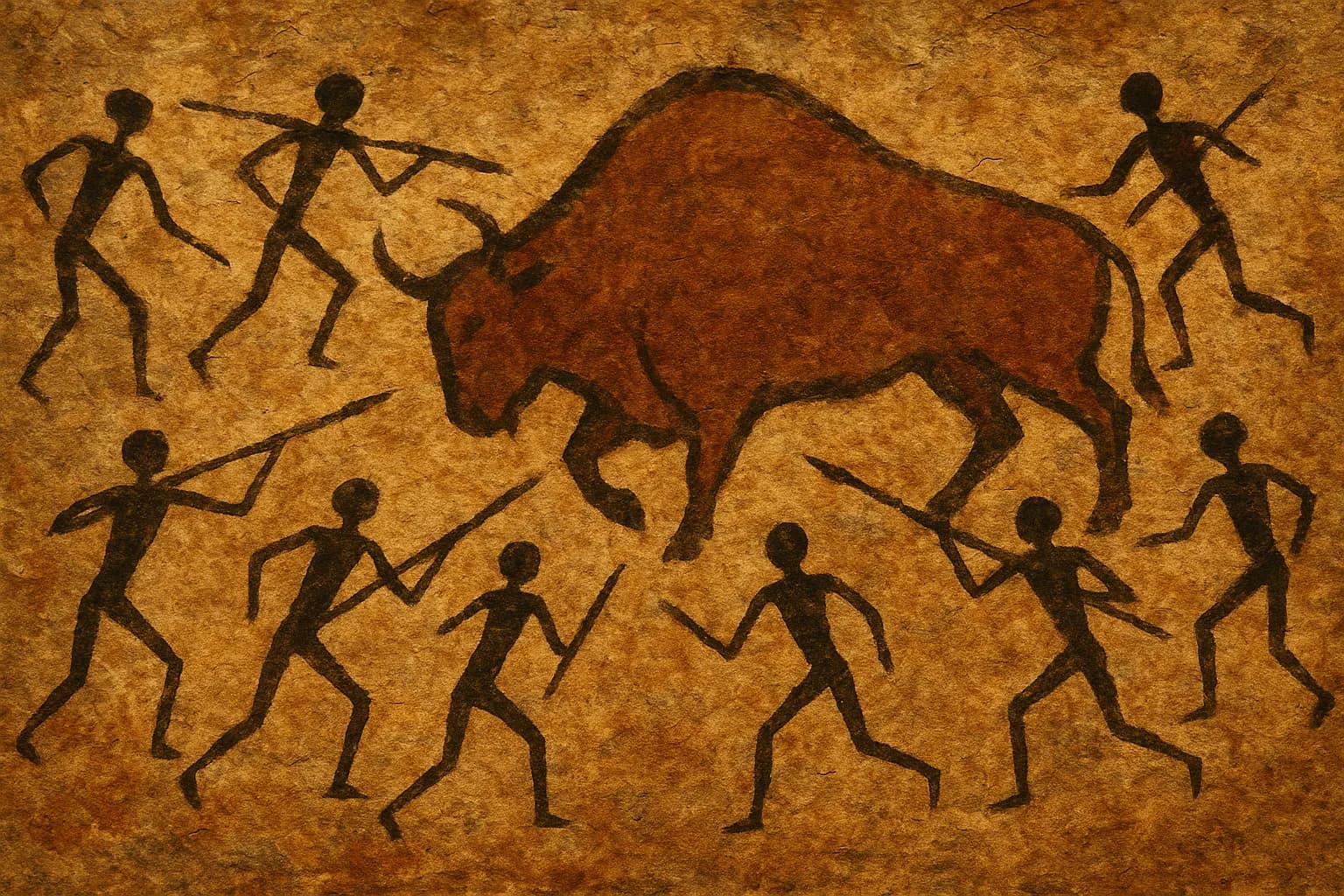Prehistoric Art
1 min read

Period: c. 40,000 BCE – c. 3,000 BCE (End date varies significantly by region) Region: Global (Key finds in Europe, Africa, Asia, Australia, Americas)
Overview & Key Characteristics
Prehistoric Art encompasses the artifacts and structures created by human cultures before the advent of written records, spanning vast periods from the Upper Paleolithic through the Neolithic and into the early Metal Ages in some regions. It represents the earliest evidence of human symbolic thought, creativity, and communication beyond simple utility. Major forms include cave paintings and engravings, portable sculptures (like 'Venus' figurines), decorated tools, pottery, and monumental megalithic structures. Its functions likely included ritual, sympathetic magic (related to hunting), storytelling, marking territory or identity, and tracking astronomical events.
Summary of Common Characteristics (Highly Variable Across Time/Region):
| Feature | Characteristic Description |
|---|---|
| Light | Primarily utilizes natural light or flickering torch/lamp light (in caves); not depicted artistically. |
| Surface/Texture | Natural rock (cave walls, shelters), bone, ivory, antler, stone, clay. Surfaces sometimes prepared. |
| Figures | Paleolithic: Often strikingly naturalistic animals; stylized or abstract humans/signs. Neolithic: Increasingly schematic, stylized figures; depiction of groups, narratives. |
| Space/Depth | Generally flat representation; perspective is rare. Overlapping or placement may suggest rudimentary depth. Hierarchical scale sometimes used. |
| Color Palette | Primarily earth pigments: Red ochre, yellow ochre, charcoal black, manganese violet, white kaolin/chalk. Applied dry or mixed with binders (saliva, fat). |
| Composition | Paleolithic caves: Often isolated figures or seemingly random groupings, using natural rock contours. Neolithic: More organized scenes, patterns (pottery), geometric arrangements (megaliths). |
| Details/Lines | Strong outlines (painted or engraved) are common. Use of silhouette. Sometimes basic shading or modeling (esp. Paleolithic animals). Neolithic art often simpler, more symbolic lines. |
| Mood/Emotion | Varies widely: Awe-inspiring, mysterious (cave paintings); symbolic, ritualistic; decorative (pottery); monumental, communal (megaliths). |
| Subject Matter | Paleolithic: Large game animals (bison, horses, mammoths, deer), human hand stencils/prints, 'Venus' figurines (often exaggerated female forms), abstract geometric signs. Neolithic: Human figures in activities (hunting, farming, dancing, ritual), pottery decoration, megalithic structures. |
Historical Context & Influences
This art emerged and evolved alongside key developments in human history:
- Paleolithic (Old Stone Age): Primarily nomadic hunter-gatherer societies existing during the Ice Ages. Development of sophisticated stone and bone tools. Likely complex belief systems involving shamanism or animism.
- Mesolithic (Middle Stone Age): Transition period after the last Ice Age, adaptation to new environments. Microlith tools. Rock art often features smaller figures, more human activity.
- Neolithic (New Stone Age): The "Neolithic Revolution" saw the development of agriculture, animal domestication, polished stone tools, pottery, and settled villages, leading to more complex social structures. This allowed for large-scale communal projects like megalithic monuments and spurred different forms of artistic expression (e.g., pottery decoration, architectural elements). Göbekli Tepe in Turkey stands out as a massive pre-pottery Neolithic ceremonial site. Çatalhöyük, also in Turkey, shows early town life with extensive murals.
The primary influences were the natural environment, available materials, subsistence strategies (hunting vs. farming), developing social structures, and emerging belief systems/cosmologies.
Key Artists & Their Contributions
The creators of prehistoric art were anonymous individuals or groups within their societies. Their identities, specific intentions (beyond broad interpretations), and individual contributions are lost to time. Art-making may have been a specialized role in some cases, or a more communal activity in others.
Notable Works / Sites
- Paleolithic Cave Art (Europe): Chauvet Cave (France, c. 30,000 BCE), Lascaux Cave (France, c. 17,000 BCE), Altamira Cave (Spain, c. 15,000 BCE).
- Paleolithic Portable Art (Europe): Venus of Willendorf (Austria, c. 28,000-25,000 BCE), Venus of Hohle Fels (Germany, c. 38,000 BCE), Lion-Man of Hohlenstein-Stadel (Germany, c. 38,000 BCE).
- Mesolithic/Neolithic Rock Art (Global): Bhimbetka rock shelters (India), Kakadu National Park (Australia), Tassili n'Ajjer (Algeria), San Rock Art (Southern Africa).
- Neolithic Sites/Artifacts: Göbekli Tepe (Turkey, c. 9600-8200 BCE), Çatalhöyük murals and figurines (Turkey, c. 7500-5700 BCE), Jomon Pottery (Japan, from c. 14,000 BCE), Various European Neolithic pottery styles (e.g., Linear Pottery Culture, Bell Beaker Culture).
- Megalithic Structures (Europe): Stonehenge (UK, c. 3000-1600 BCE), Newgrange (Ireland, c. 3200 BCE), Carnac Stones (France, c. 4500-3300 BCE), Skara Brae village (UK, c. 3180-2500 BCE).
Legacy and Influence
Prehistoric art represents the dawn of human visual expression and symbolic behavior. It provides invaluable insights into the cognitive abilities, beliefs, and lifestyles of early humans.
- It forms the absolute foundation upon which all later art history is built.
- The development of representation, abstraction, and symbolic systems started here.
- Megalithic construction techniques demonstrate early engineering and social organization skills.
- Its forms, perceived 'primitivism,' and mysterious nature have fascinated people for centuries and occasionally inspired modern artists (e.g., Picasso, Abstract Expressionists).